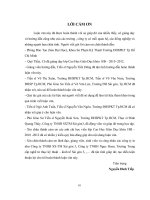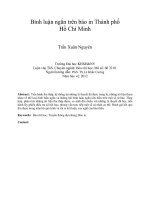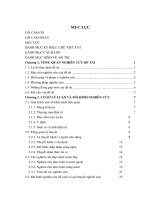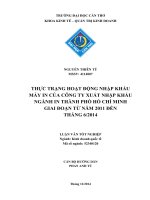Lecture Formal methods in software engineering - Lecture 18: Abstract model specification - TRƯỜNG CÁN BỘ QUẢN LÝ GIÁO DỤC THÀNH PHỐ HỒ CHÍ MINH
Bạn đang xem bản rút gọn của tài liệu. Xem và tải ngay bản đầy đủ của tài liệu tại đây (310.6 KB, 7 trang )
<span class='text_page_counter'>(1)</span><div class='page_container' data-page=1>
Formal Methods in SE
</div>
<span class='text_page_counter'>(2)</span><div class='page_container' data-page=2></div>
<span class='text_page_counter'>(3)</span><div class='page_container' data-page=3>
Notation
• Is used to test the results
• Independent of program code
• Mathematical Data model
</div>
<span class='text_page_counter'>(4)</span><div class='page_container' data-page=4>
4
Features( Znotation)
• Decompose specification into small pieces
(Schemas)
• Schemas are used to describe both static and
dynamic aspects of a system
• Data Refinement
• Direct Refinement
</div>
<span class='text_page_counter'>(5)</span><div class='page_container' data-page=5>
Schema
Static Aspect
<sub>The state can occupy.</sub>
<sub>The invariant relationships that are </sub>
</div>
<span class='text_page_counter'>(6)</span><div class='page_container' data-page=6>
6
Schema(cont.)
Dynamic Aspect
<sub>The operations that are possible</sub>
<sub>The relationship between their inputs and </sub>
outputs.
</div>
<span class='text_page_counter'>(7)</span><div class='page_container' data-page=7>
Notation Example
Some variables are
declared.
Relationship between the values of the variables
Name
</div>
<!--links-->









